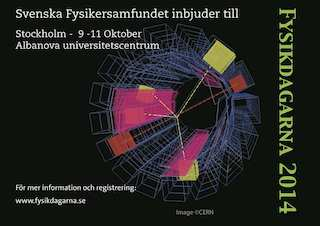Speaker
Henrik Cederquist
(Stockholms universitet)
Description
The acronym DESIREE stands for Double ElectroStatic Ion Ring ExpEriment. Its main instrument consists of two electrostatic ion storage rings. Ions of positive charge are stored in one of the rings and negative ions are simultaneously stored in the other ring. The storage rings have a common straight section where the two beams can be merged to study binary collisions between individual pairs of positive and negative ions down to center-of-mass energies in the meV range. The rings, which have circumferences of 8.8 meters, are mounted in a large vacuum chamber cooled to
10 Kelvin. The ions are typically stored at energies of tens of keV in the laboratory system and due to the excellent vacuum, which we measure to be about 2x10-14 mbar, the 1/e storage times may be very long – up to half an hour has been measured for 10 keV S-. Thus most atomic and molecular ions have time to relax to their electronic and vibrational ground states as they equilibrate with the low temperature surroundings. We can thus define the initial conditions in terms of the internal ion energies and in terms of the collision energies down to the meV range. The internal energies after the collision may be deduced from measurements of arrival times and positions on a detector behind the beams merging section. Preliminary results from lifetime measurements with atomic and cluster anions stored in one of the rings will be discussed briefly. The DESIREE facility will also operate with complex molecular systems and I will briefly discuss a range of recent results on reactions involving Polycyclic Aromatic Hydrocarbon molecules - PAHs.
